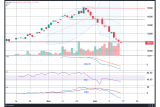
Over April Trump increased pressure on the global trade system, with particular focus on China. At the time of writing the US has imposed tariffs of 145% on China, and China has retaliated with 125% tariffs on the US. During Trump’s first term the trade war between the US and China also ramped up in April, with China adding 25% tariffs on 2nd April 2018 and a further 25% on 4th April 2018. The planting season in the US doesn’t start until May, so the real impact of the tariffs won’t be felt until Q4, when shipments begin in earnest. But, given that shipments to China in Q4 18 dropped to 0.34 Mt from 17.4 Mt the previous year, we can certainly expect something similar again if high tariffs stay in place. It’s worth noting that exports didn’t reach pre-Trump levels again until Q4 20.
Rather than a detailed account of US tariffs, we want to focus here on the general long term decline in US agricultural dominance and how this will influence the consequences of an agricultural trade war. US production of corn, soybeans and wheat, the three main dry bulk agricultural products, peaked around the 2016/17 trade year and has since plateaued. However, in terms of share of world production the US has been on a downward trend since the 1980s. In the 2000/01 marketing year the US produced 43% of the world’s corn, 43% of the world’s soybeans and 10% of the world’s wheat. Last year these figures had dropped to 32%, 29% and 6% respectively.
This increased diversification in supply has reduced US leverage. The key example of this is the loss of soybean market share to Brazil. Brazilian soybean exports overtook the US in the 2012/13 marketing year and in the 2023/24 year reached 59% of global trade, a figure the US hasn’t reached since 1997/98. In 2018, when the Chinese stopped buying US soybeans, they significantly increased their purchase of Brazilian beans to make up some of the shortfall. That calendar year the Chinese imported 66.1 Mt of Brazilian soybeans (up 15.2 Mt) and 16.6 Mt of US soybeans (down 16.2 Mt).

This time around clearly the Chinese have the potential to maximise imports from Brazil again, and evidence suggests that, in anticipation of the tariffs, that’s exactly what they have been doing. Brazilian customs data shows that they shipped 11.1 Mt of soybeans to China in March, the highest monthly figure since 11.62 in April 2021, and the second highest on record.
Perhaps more importantly to the dry bulk market, however, is the opportunity for other importers to do the same. In 2018, following the loss of Chinese trade, US soybean exporters shipped 9.2 Mt to the EU, just over double what they sent the previous year. The distances were shorter and the volumes only went part way to offsetting the loss from US-China trade, but the increase in US-EU trade provided some buffer for the dry bulk market. Should the EU turn their back on US soybeans we may see no such buffer in 2025. On 9th April the EU announced a 25% tariff on a list of US goods including soybeans set to be enforced from 15th April onwards. Whilst these tariffs have since been put on hold, it indicates the willingness to put pressure on US farmers.
The true impact on the US grains trade will be felt when the harvest starts around September. Last year almost 70% of seaborne US soybean exports left on Panamax vessels, with about a quarter on Handymaxes and the rest on smaller vessels. A loss of Chinese trade would disproportionately affect Panamax vessels – the percentage of that trade on Panamax vessels is usually over 90%. It’s also worth noting that far fewer Panamax vessels use the Panama canal to transport soybeans since rules were changed last year. Pre the 2023 drought 37% of US-China soybean trade in Panamaxes went through the canal. Last year that was only 2%. Given the longer distances, any reduction in trade will have a greater impact than in 2018.
By William Tooth, Senior Dry Bulk Analyst, Research, SSY.
Articles
You may also be
interested in
View allGet in touch
Contact us today to find out how our expert team can support your business















